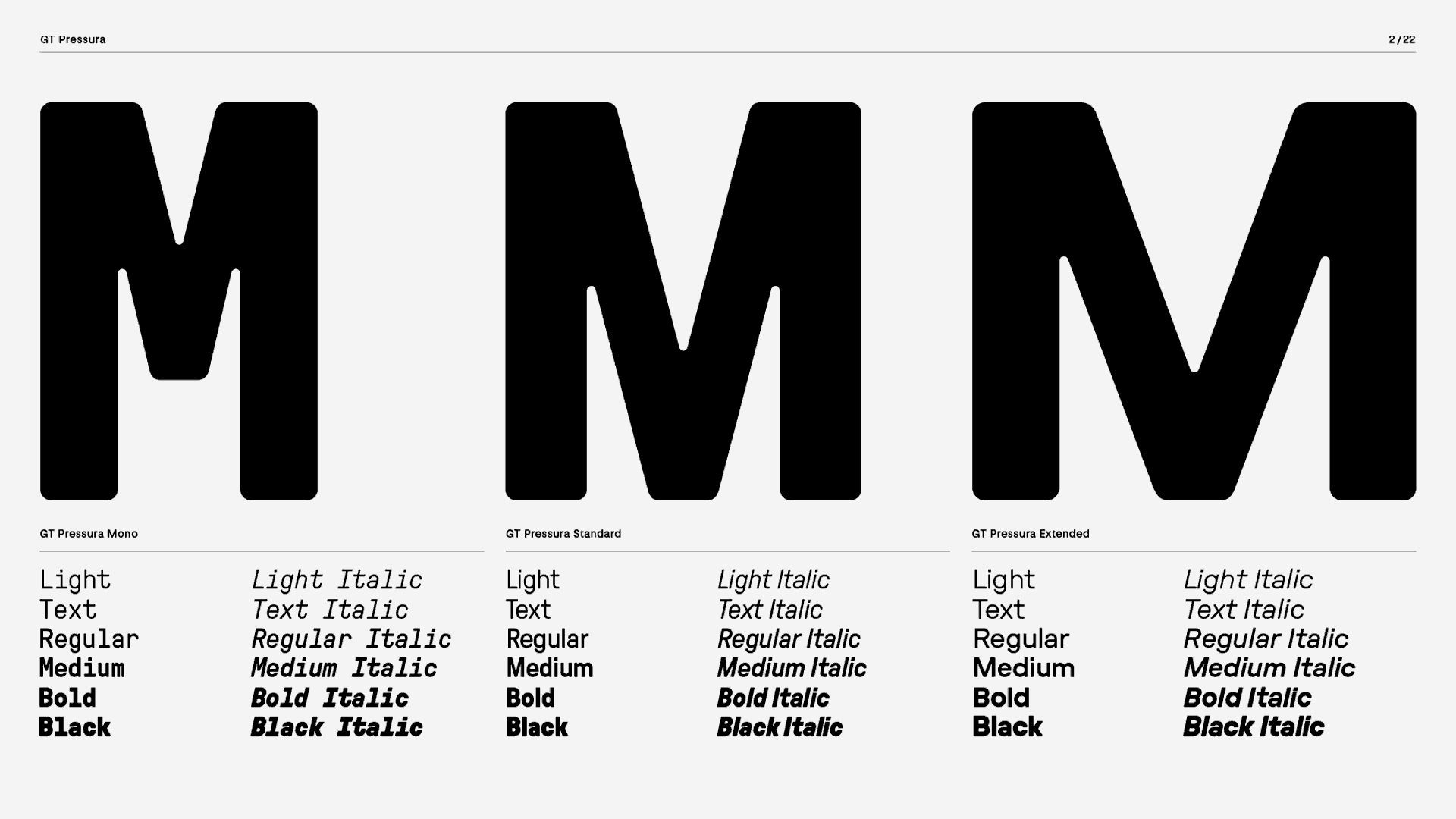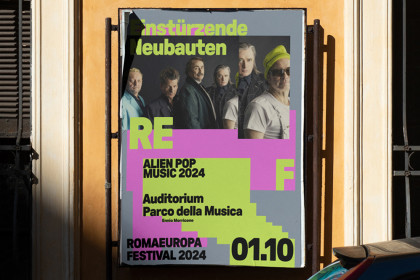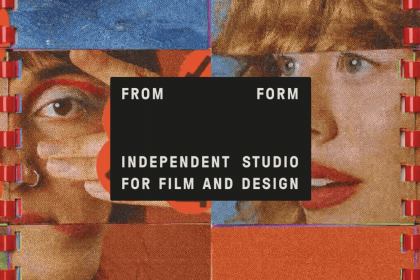GT Pressura
Family overview
- Standard
- Light Italic
- Text Italic
- Regular Italic
- Medium Italic
- Bold Italic
- Black Italic
- Mono
- Light Italic
- Text Italic
- Regular Italic
- Medium Italic
- Bold Italic
- Black Italic
- Extended
- Light Italic
- Text Italic
- Regular Italic
- Medium Italic
- Bold Italic
- Black Italic
Subfamilies
- Standard LightΤα πλοία που μεταφέρουν έτοιμα συσκευασμένα φορτία σε τέτοιες κατασκευές ονομάζονται επίσημα εμπορευματοκιβωτιοφόρα συνηθίζεται όμως αντ' αυτού ο αγγλικός όρος κοντέινερ σιπ ως περισσότερο εύχρηστος.
- Standard Light ItalicIt’s the terror of knowing – What the world is about
- Standard Text45' High Steel Cargo, 60,960 lb, 45' x 8' x 9'6", 3,036 cubic feet
- Standard Text ItalicUnder pressure
- Standard RegularΒαρειά φορτία χαρακτηρίζονται τα ξηρά φορτία που καταλαμβάνουν όγκο μέχρι το πολύ 50 κυβικούς πόδες ανά τόνο βάρους.
- Standard Regular ItalicFragile, Keep Dry (with Broken Glass & Umbrella Graphic) 18" Image, 24"×24" Sheet
- Standard Mediumно-фантастический фильм в жанре антиутопии, снятый на киностудии
- Standard Medium ItalicIt was 8 ft 6 in (2.59 m) long, 6 ft 3 in (1.91 m) wide, and 6 ft 10 in (2.08 m) high, with double doors on one end, was mounted on skids, and had lifting rings on the top four corners.
- Standard BoldJapan Post Service, Tokyo, Japan, 2007 Norio Kitamura
- Standard Bold ItalicIn 1948 the U.S. Army Transportation Corps developed the "Transporter", a rigid, corrugated steel container, able to carry 9,000 pounds (4,100 kg).
- Standard BlackPuts people on streets
- Standard Black ItalicКонтейнерные перевозки грузоперевозки с использованием стандартных контейнеров позволяют выполнять бесперегрузочную доставку товаров от отправителя к получателю
- Settings
Typeface information
GT Pressura is inspired by metal type printing history as well as engineered letters stamped onto shipping boxes. It uses the visual gesture of ink spreading under pressure as a stylistic device, offering an alternative to more spindly typefaces of the digital age.
Typeface features
OpenType features enable smart typography. You can use these features in most Desktop applications, on the web, and in your mobile apps. Each typeface contains different features. Below are the most important features included in GT Pressura’s fonts:
- TNUM
- Tabular Figures
13.07.2048
- SS01
- Alternate a
React
- CASE
- Case sensitive forms
¿TE GUSTA?
Typeface Minisite
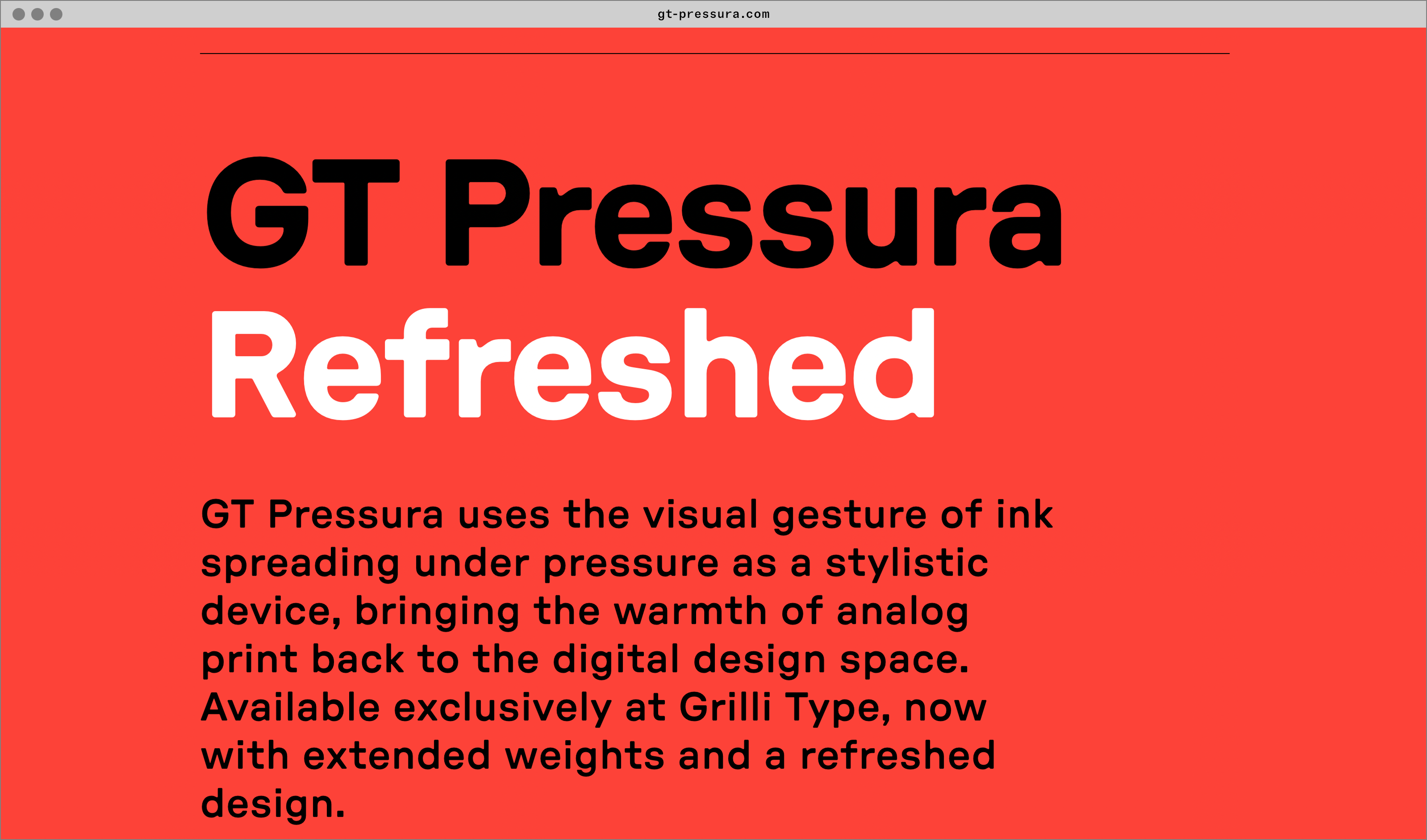
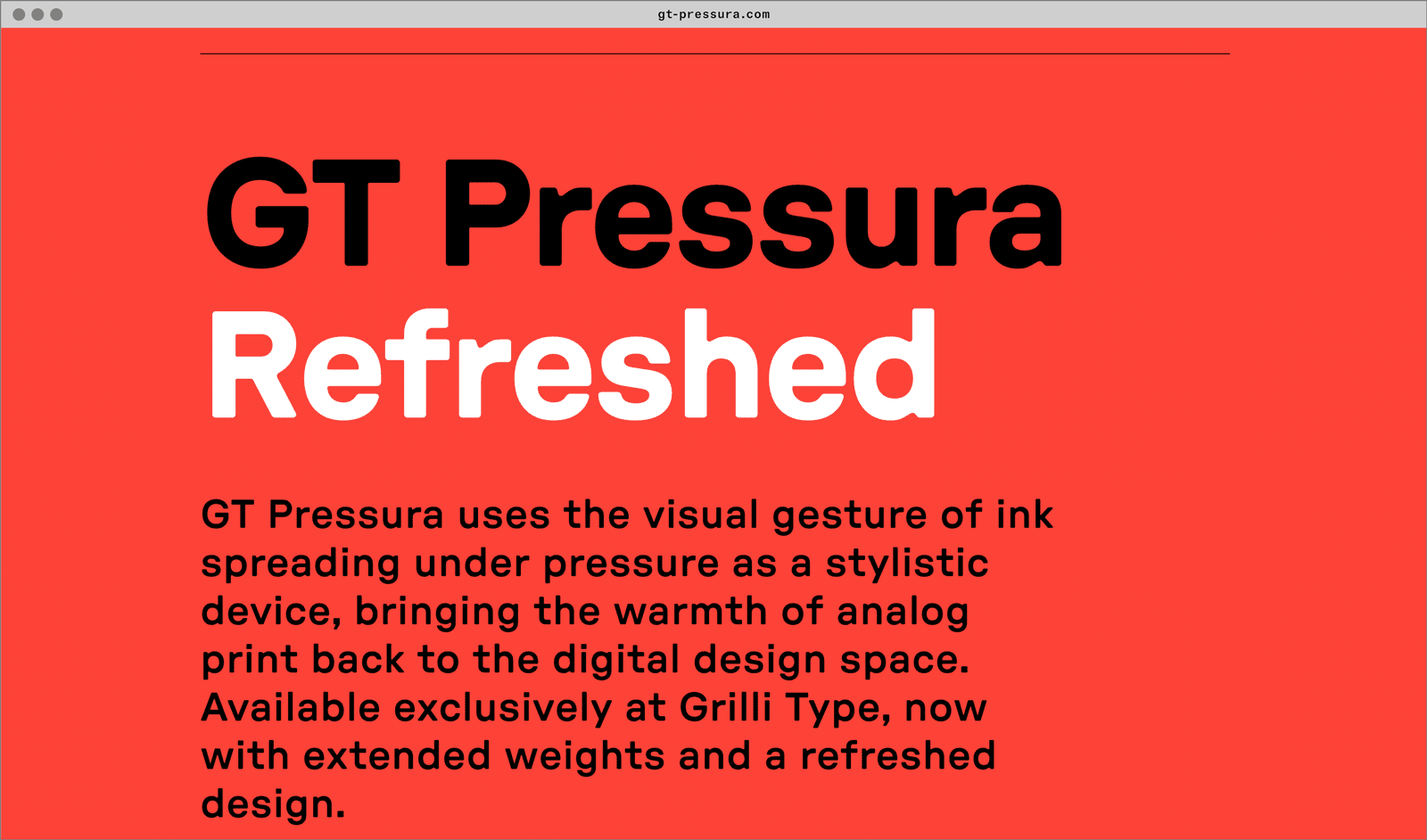
- Visit the GT Pressura minisite to discover more about the typeface family’s history and design concept.
GT Pressura in use

